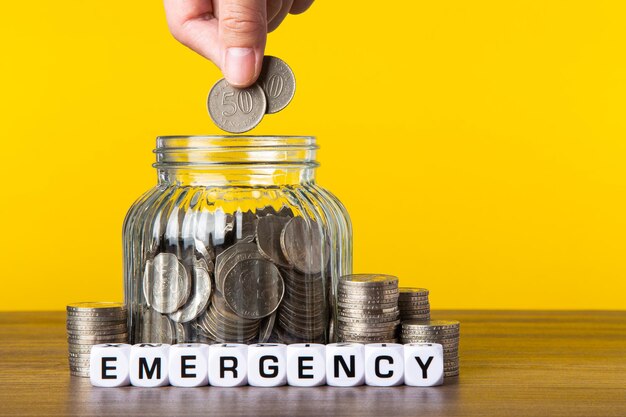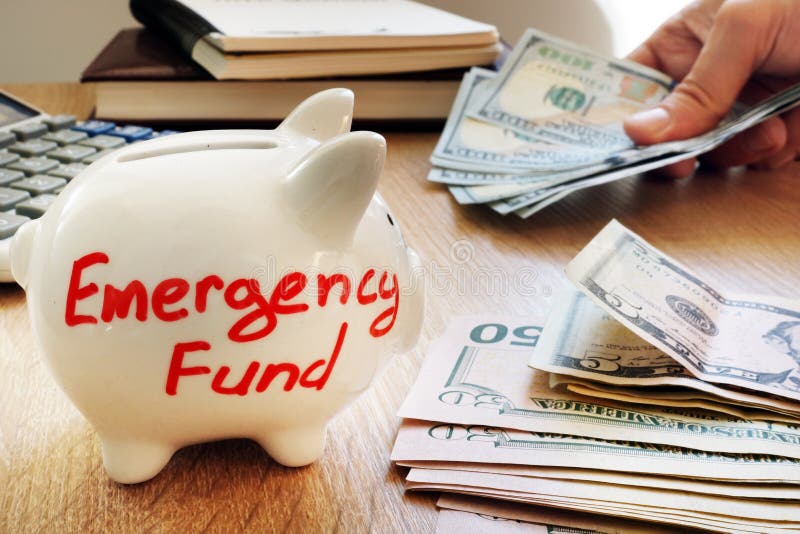The Ultimate Guide to Saving for Emergencies: Build Your Financial Safety Net 🚀💰
Life is unpredictable. Unexpected expenses—like medical bills, car repairs, or job loss—can strike at any moment. Without a solid emergency fund, these surprises can wreak havoc on your finances. But with proper planning, you can prepare for the unexpected and maintain financial stability. In this guide, we’ll explore why an emergency fund is crucial, how much you should save, and practical tips to build and grow your savings. ✅💡

📌 Why You Need an Emergency Fund
An emergency fund is a financial cushion that covers unexpected expenses without derailing your budget. Here’s why having one is essential:
✅ Prevents debt – Avoid using credit cards or loans for emergencies.
✅ Reduces stress – Knowing you’re financially prepared brings peace of mind.
✅ Covers unexpected costs – Medical bills, home repairs, or sudden job loss won’t disrupt your finances.
✅ Provides financial security – Helps you stay on track with long-term financial goals.
Without an emergency fund, a single unexpected expense could send you into a financial crisis. Let’s ensure that doesn’t happen! 💪💵
1️⃣ How Much Should You Save? 💰
A general rule of thumb is to save 3 to 6 months’ worth of living expenses. However, the exact amount depends on your lifestyle, job stability, and financial commitments. Consider these guidelines:
🔹 Minimum ($1,000 – $2,500) – A starter fund for small emergencies.
🔹 3 months of expenses – Ideal for single individuals with stable income.
🔹 6+ months of expenses – Recommended for families, freelancers, or those with irregular income.
Not sure where to start? Begin with $500 to $1,000 and gradually build up! 🌱📈

2️⃣ Where to Keep Your Emergency Fund 🏦
Your emergency fund should be easily accessible, but not so easily spent. Consider these safe places:
✔️ High-yield savings account – Earns interest while keeping funds liquid.
✔️ Money market account – Offers slightly higher interest than a regular savings account.
✔️ Traditional savings account – Simple, secure, and readily available.
✔️ Separate bank account – Helps reduce temptation to spend.
Avoid investing emergency savings in stocks or real estate, as these assets fluctuate in value and may not be accessible when needed. 🚨📊
3️⃣ How to Start and Grow Your Emergency Fund 🌱
Building an emergency fund doesn’t have to be overwhelming. Follow these simple steps to get started:
🔹 Step 1: Set a Savings Goal 🎯
Define how much you need for emergencies and set a target date. For example:
➡️ “I will save $3,000 in 12 months by setting aside $250 per month.”
Having a clear goal makes saving more achievable! 🏆
🔹 Step 2: Automate Your Savings 💳
The easiest way to save is to set up automatic transfers from your checking account to your emergency fund:
✔️ Direct deposit from your paycheck.
✔️ Automatic bank transfers on payday.
✔️ Round-up savings apps like Acorns or Digit to save spare change.
When savings are automatic, you won’t even miss the money! 🔄💸
🔹 Step 3: Cut Unnecessary Expenses ✂️
Find small expenses to cut and redirect that money into savings. Examples:
🚫 Skip one restaurant meal per week = $50 saved monthly.
🚫 Cancel unused subscriptions = $20-$50 saved monthly.
🚫 Make coffee at home = $100+ saved monthly.
Tiny changes add up to big savings over time! ☕➡️💰
🔹 Step 4: Use Windfalls Wisely 🎁
Any extra money you receive should boost your emergency fund:
✅ Tax refunds.
✅ Work bonuses.
✅ Side hustle income.
✅ Gifts or unexpected cash.
Instead of spending, save at least 50% of windfalls for emergencies. 🚀
🔹 Step 5: Increase Your Income 📈
If saving feels impossible, find ways to earn extra income:
💼 Start a side hustle (freelancing, tutoring, ride-sharing).
📦 Sell unused items on eBay, Poshmark, or Facebook Marketplace.
🛒 Use cashback apps like Rakuten and Ibotta for extra savings.
Even an extra $50-$100 per month can grow your fund quickly! 💵💪
4️⃣ When to Use Your Emergency Fund 🚨
Your emergency fund is for true emergencies, not impulse spending. Only use it for:
✔️ Job loss – Cover basic expenses while job hunting.
✔️ Medical expenses – Unexpected doctor visits or urgent procedures.
✔️ Car repairs – Essential fixes to keep your vehicle running.
✔️ Home repairs – Urgent fixes like plumbing or electrical issues.
Before dipping into savings, ask yourself: Is this a true necessity or can I find another way to cover it? 🤔💭
5️⃣ Rebuilding Your Emergency Fund 🏗️💰
If you use your emergency savings, rebuild it ASAP by:
✅ Temporarily cutting expenses – Pause non-essential spending.
✅ Adjusting your budget – Increase savings contributions.
✅ Taking on extra work – Freelance, overtime, or side gigs.
✅ Using tax refunds or bonuses – Put lump sums directly into savings.
The faster you rebuild, the safer your financial future! 🚀
6️⃣ Common Emergency Fund Mistakes ❌
Avoid these mistakes to protect your savings:
❌ Not saving enough – Aim for at least 3-6 months’ worth of expenses.
❌ Keeping funds in risky investments – Emergency money should be liquid and safe.
❌ Dipping into it for non-emergencies – Vacations and shopping don’t count as emergencies!
❌ Forgetting to replenish it – Always rebuild after using your savings.
Being disciplined ensures your emergency fund remains intact when needed. 🛑💰
🏁 Final Thoughts: Secure Your Financial Future Today! 🎯
An emergency fund is your financial safety net. It provides peace of mind and keeps you from relying on debt in times of crisis. By following these simple strategies, you can build, protect, and grow your savings. 🌟
Take action today:
✅ Set your savings goal.
✅ Open a dedicated savings account.
✅ Automate contributions.
✅ Reduce expenses and increase income.
✅ Stay disciplined and rebuild when needed.
With a strong emergency fund, you’re financially prepared for anything life throws your way! 💪💰
How much do you have saved for emergencies? Let us know in the comments! 👇😊






